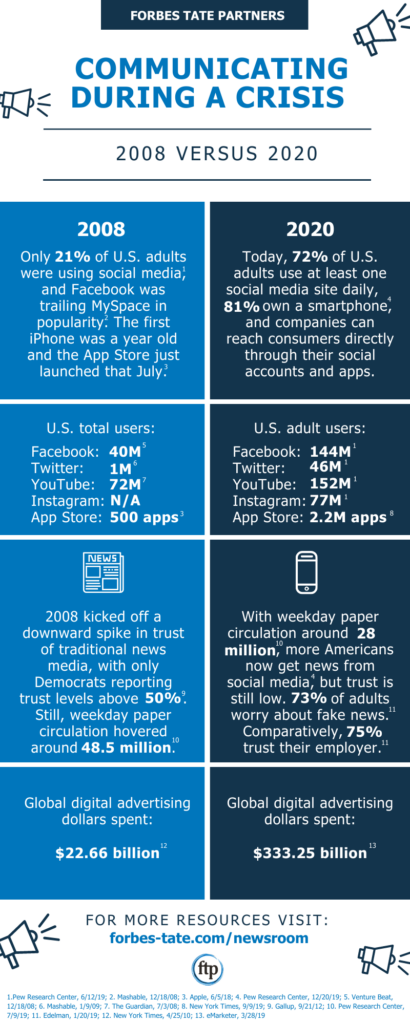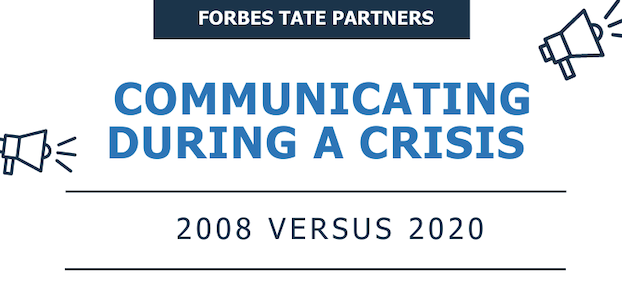Contributions to this blog were made by Jeff Sadosky, Lauren Crawford Shaver, Sabrina Siddiqui, Jeanne Moran, Kate Jahries, Erin Van Gessel, and Britton Burdick
In a recent FTP note, we looked at the parallels between the 2008 financial crisis and today’s COVID-19 pandemic – both in terms of the massive government recovery efforts and the corresponding crisis messaging. Not only are there parallels, there are key learnings that communicators and corporate leaders need to consider as they work their way through the pandemic.
However, the landscape of 2008 is not the world of 2020. There have been significant changes over the last 12 years between the financial crisis and today, including how the American people access information, from whom they get that news, and advertising practices. For example:
- In 2008, 21% of U.S. adults were using social media compared to 72% in 2020; and
- Today, there are 77 million Instagram users on a platform that did not exist in 2008; and
- In 2008, $22.66 billion was spent on global digital advertising dollars and in 2020, that number reached over $333 billion – a 1,470.65% increase.

There are many additional, foundational differences between now and the 2008 financial crisis. No one should dust off the same playbook from 2008, though there are lessons to be learned, with many of the same regulators and policymakers jumping back into the fray to fight this fire. The massive shift in information consumption and means of communications, though, should help formulate any advocacy or crisis communications planning moving forward.
